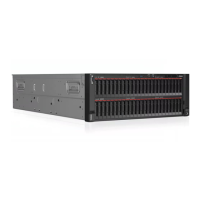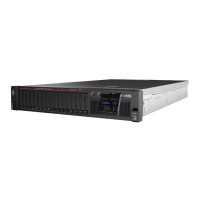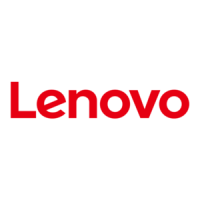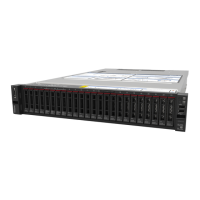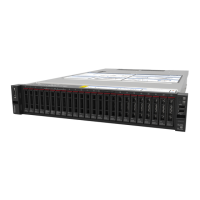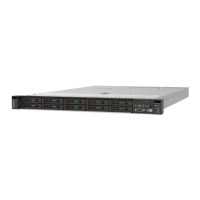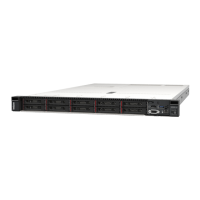– Lenovo XClarity Provisioning Manager
“OS Installation” section in the LXPM documentation compatible with your server at
https://
sysmgt.lenovofiles.com/help/topic/lxpm_frontend/lxpm_product_page.html
– Lenovo XClarity Essentials OneCLI
http://sysmgt.lenovofiles.com/help/topic/toolsctr_cli_lenovo/onecli_r_uxspi_proxy_tool.html
– Lenovo XClarity Integrator deployment pack for SCCM (for Windows operating system only)
https://sysmgt.lenovofiles.com/help/topic/com.lenovo.lxci_deploypack_sccm.doc/dpsccm_c_endtoend_
deploy_scenario.html
Manual deployment
If you cannot access the above tools, follow the instructions below, download the corresponding OS
Installation Guide, and deploy the operating system manually by referring to the guide.
1. Go to
https://datacentersupport.lenovo.com/solutions/server-os.
2. Select an operating system from the navigation pane and click Resources.
3. Locate the “OS Install Guides” area and click the installation instructions. Then, follow the instructions to
complete the operation system deployment task.
Back up the server configuration
After setting up the server or making changes to the configuration, it is a good practice to make a complete
backup of the server configuration.
Make sure that you create backups for the following server components:
• Management processor
You can back up the management processor configuration through the Lenovo XClarity Controller
interface. For details about backing up the management processor configuration, see:
“Backing up the BMC configuration” section in the XCC documentation compatible with your server at
https://sysmgt.lenovofiles.com/help/topic/lxcc_frontend/lxcc_overview.html.
Alternatively, you can use the save command from Lenovo XClarity Essentials OneCLI to create a backup
of all configuration settings. For more information about the save command, see:
http://sysmgt.lenovofiles.com/help/topic/toolsctr_cli_lenovo/onecli_r_save_command.html
• Operating system
Use your backup methods to back up the operating system and user data for the server.
Update the Vital Product Data (VPD)
After initial setup of the system, you can update some Vital Product Data (VPD), such as asset tag and
Universal Unique Identifier (UUID).
Update the Universal Unique Identifier (UUID)
Optionally, you can update the Universal Unique Identifier (UUID).
There are two methods available to update the UUID:
• From Lenovo XClarity Provisioning Manager
To update the UUID from Lenovo XClarity Provisioning Manager:
Chapter 4. System configuration 145
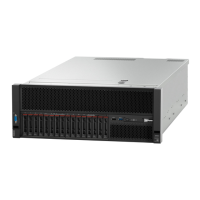
